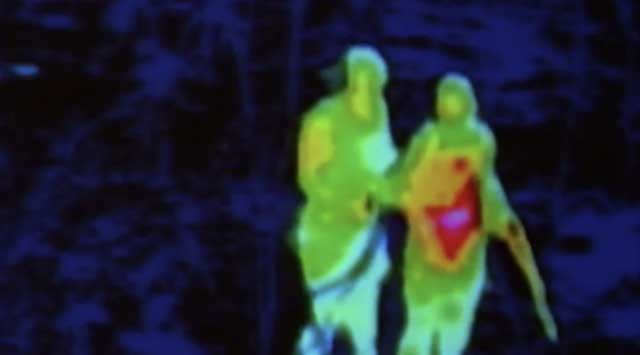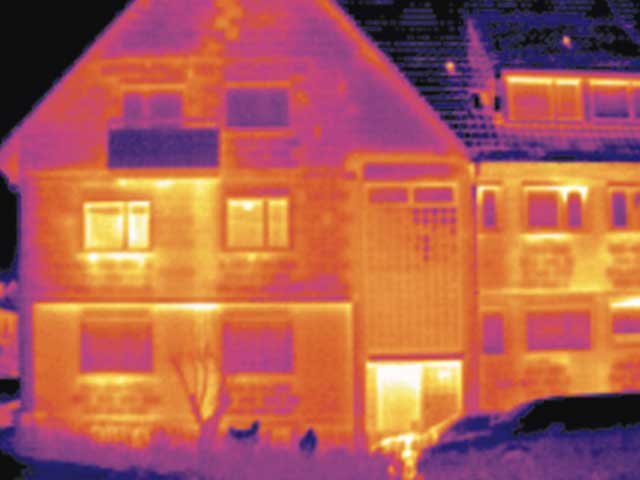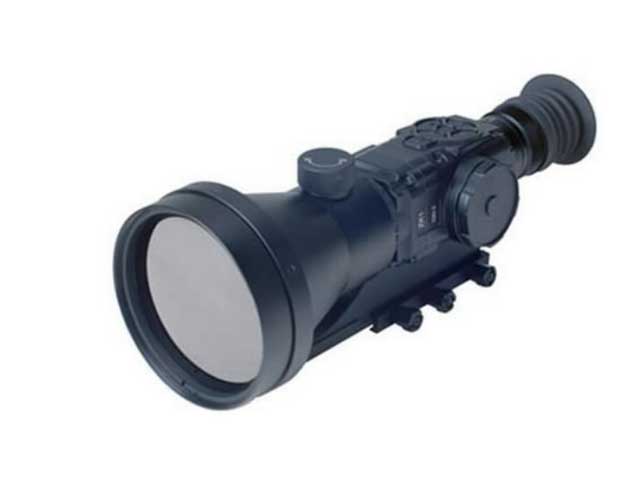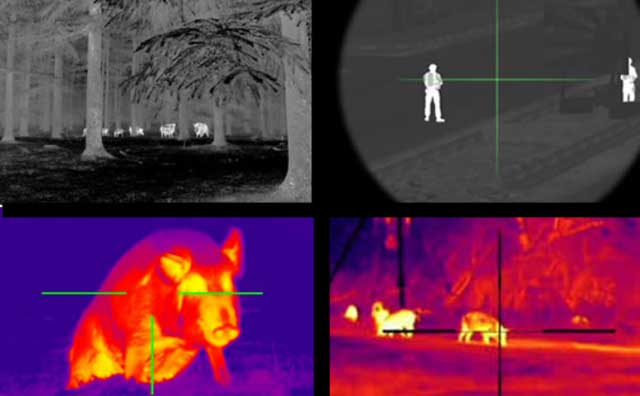Do you know how to choose a thermal rifle scope?
Sales Engineer: Gloria Gao
Email: gloria@bri-elec.com
WhatsApp: 0086-199 2997 5286
Do you know how to choose a thermal rifle scope?
1. How does thermal scope work?
As we already mentioned, today, there are two main types of technologies that allow us to solve the fundamental problem of our body's deficiencies - the inability to recognize objects in low light conditions. It's no secret that evolution has provided even domestic cats with such a simple function. We were deprived of this elementary advantage up to the invention of two technologies by scientists.
The first one is similar to the vision system of the same cats. Night vision is provided by enhancing weak streams of light that render the object under observation up to the visible range. However, today we are not talking about him but a more intriguing version.
This section of the military and civilian industry is called thermal imaging.
Thermal imaging works by detecting the heat (IR radiation) given off by an object, such as an animal, a human, or a car. That is why such a unit may be used in complete darkness.
From the outside, it may seem like magic. A device that can be in your hand, fixed on your head or helmet, or attached to a rifle will give you tremendous information about the environment you are monitoring.
You get the result of observation in the form of visualization of thermal signatures of objects. With modern advances, infrared cameras, which are the heart of the device, have become much better quality and sensitive. This was due to the optimization of infrared optical image sensors' production process, a fundamental part of the device. Thanks to this, today, you have the opportunity to use compact and lightweight devices that give amazing results.
One of the main indicators of devices is the field of view. There are three main options: a 6 ° telephoto counterpart, 23 ° standard optics, and a 48 ° wide-angle lens. Without going into technical details, we can draw the following conclusion: one of the advantages of a thermal imager is that the distance to the object does not affect measuring the temperature signature, and therefore does not distort the image.
What opportunities does this technology provide you? Limitless. To see the object, both at night, and in snowfall, and the rain, and in fog, you need a little. The object's temperature needs to be above absolute zero. All further will be done by the technician. And you will see a high-quality and informative image with different light intensities correlated with temperature.
Moreover, thermal riflescopes are passive infrared weapon sighting systems that allow operators to spot heat signatures day or night in the rain, through deep/tall grass, fog, dust, and smoke. And this opportunity makes this technology even more attractive to us, 2. When do you need a thermal scope for your rifle?


In the previous section, we covered the basics of thermal imagers as is obvious, the ability to register and display temperature fluctuations of objects and heat signatures in general. Such characteristics make thermal scopes more effective in certain applications.
It is only natural that such fantastic opportunities do not leave anyone indifferent. And if you think that such a technique is in demand only for military purposes and hunting, you are wrong. Today, the fields of equipment application based on thermal imaging technology are so extensive that it is simply impossible to list them completely.
Police and security officers can use both thermal and night vision scopes, particularly for surveillance. A thermal system will still deliver more effective detection in such environmental conditions as fog, dust, or smoke. Hunters can use night-vision devices (NVDs) to maneuver through the woods at night, but a thermal type of scope will be more effective for spotting a resting or otherwise still animal in thick foliage or wooded areas. And rescue teams can more easily locate an injured or unconscious person or other signs of life on land or in water, even in fog or smoke, and day or night.

3. Thermal or Night Vision scope – which better for you?
Night vision scopes, being image-enhancement technology, uses electronics and amplifies the amount of light in dark circumstances and uses this light to enable you to view in the dark. If there is no light, night vision will not generate an image, unlike thermal imaging.
This means that when using a night vision device, you must have certain conditions. For example, if there is a full moon in the sky, producing light, the image will be perfect. But, if the location is not illuminated, then the device becomes useless. And you either have to use artificial light sources or rely on your own eyes. We reject the last option immediately, and with the first option, you get a threat to be unmasked since the artificial source is clearly visible under certain conditions.
Also, keep in mind that night vision devices become quite limited when the weather is far from ideal. Fog, heavy rain, blizzard - all this makes it impossible to use the device.
With thermal imagers, everything is completely different. Based on a remote measurement of the temperature regime of the objects of observation, their operation principle allows you to obtain an optimal overview. The actual picture you get will be different. But, in terms of information content, they do not differ from each other. Moreover, with a thermal imager, you can also distinguish between traces and thermal marks under certain conditions.
The optimal condition and the only correct answer will be to have both types of devices in their arsenal. Believe me, they will be useful to you, and you will remember us with a kind word more than once if you do just that. But, don't forget that both technologies are complicated to manufacture and engineering specification. And it is quite logical that their cost is very high. Not everyone can afford the pleasure of acquiring the optimal set of tools.
If you are limited in the financial side of the purchase - very carefully and prudently analyze the purposes for which you are buying the device. And if thermal imaging is your choice, then our advice is for you.
4. Specs to look for when choosing a thermal scope.
When you are on the look-out for the type of scope you need and the amount of money you want to invest in it, take time to get to know some of the most important features you will need your thermal rifle scope to have:
1)RESOLUTION OF THE SCOPE AND SENSOR
You need to know what your thermal sensor resolution is, not just the resolution of the scope. Some scopes will have an 800×600 display but a thermal sensor that is only 320×240. This means that your thermal image will never be as clear as the same scope with a 640×480 thermal sensor.
This is one of the most important parameters of the equipment, if not the most important. In many ways, he determines the cost of the device, and the visible results of operation depend on this parameter.
2)MAGNIFICATION
Magnification is the ability of a thermal scope to enlarge a distant object by magnifying it. Most thermal scopes come with specific details regarding their optimal magnification distances. Note that a higher magnification may reduce the resolution of the image, and the refresh rate may be slightly slower.
Portable thermal imagers have optical magnification parameters of no more than 5 and magnification during digital processing - up to 8. Some devices claim up to 20. But, remember that fantastic numbers are usually realized by lowering the quality of the final image. Moreover, the minimum magnification gives a wide field of view and allows you to assess the real size of the target more objectively.
3)SCOPE DETECTION RANGE
A very high-quality thermal scope will allow you to positively identify the target at up to 4,000 yards, while an entry-level scope can limit you to 1,000 yards or less.
A lot or a little depends on the working conditions and your tasks. In any case, this indicator is in direct proportion to the lens diameter and angle of view. The larger the diameter and the smaller the angle, the greater the operational detection distance you will get.
But, do not forget that a thermal imager's capabilities are not the only factor affecting how far away you can detect an object. This object's size and contrast are the difference between the thermal radiation from the object and the background.
4)REFRESH RATE
As a general rule of thumb, the more frequently a scope refreshes the scene, the more clearly you will detect any movements in the scene.
Everything here is simple and clear as with PC games, the faster you get information, the higher the frame rate. The standard frame rate range is 7.5 to 60 Hz. If you are in the mood for thoughtful and calm observation of the territory, you can save money and not buy a high range device. If your goal is active and dynamic hunting, your choice is at least 30 Hz.
5)ZOOM TYPE
Digital zoom magnifies by using software, and it is more affordable. On the other hand, an optical zoom uses a lens and delivers a crisper image, but it is pricier.
Once again, don't be fooled. Some manufacturers skillfully juggle these types of image enlargement. But, in fact, you will get a real magnification of hundreds of times, although the image quality is unlikely to be satisfactory.
Best thermal rifle scopes from Brilliance Tech
If we talk about philosophy, then ours has always consisted of a simple rule: "Either do well or do not do at all." Quality and reliability are the main priorities of AGM Globalvision products. It is important that our clients feel free in what they do, forgetting the fears that their equipment may fail them.
Good things cost money because we put an incredible amount of resources and effort into bringing you the best. And we do not see any point in offering and advising you analogs that are inferior to our products in all respects. So let's look at the best from the best manufacturer.


Sales Engineer: Gloria Gao
Email: gloria@bri-elec.com
WhatsApp: 0086-199 2997 5286

